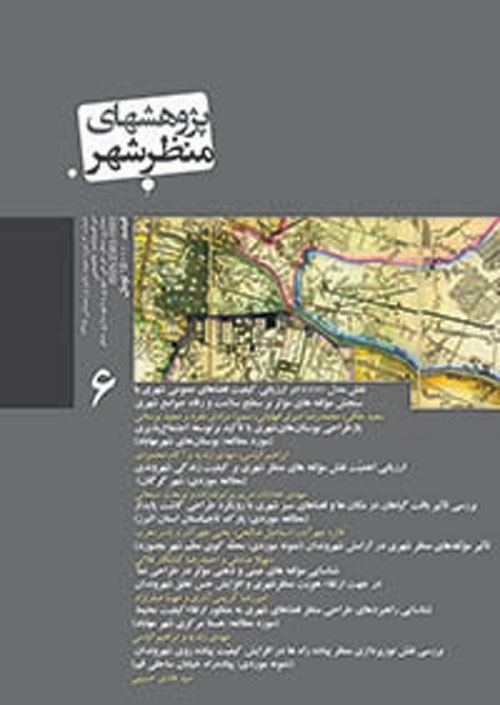Strategic Planning for Improving Spatial Qualities of Pedestrian Paths Landscape in Tehran
Case Study: 17 Shahrivar Pedestrian Path
Author(s):
Abstract:
Pedestrian paths, as well as increased space for communication and social interaction of citizens, strengthen community, increase the sense of place, and achieve a balance between the vehicles and the pedestrian. The Pedestrian paths are both tools and space for crystallization and the rights of pedestrians and citizens. This study aims at examining the strategic planning for improving the spatial quality of 17 Shahrivar Pedestrian path in Tehran. In this regard, it has benefited from SWOT and AHP models. It has a functional purpose and uses a descriptive analytical method. Required information was gathered through library and survey studies. In addition, to collect and evaluate the survey information of the research, the Delphi technique and interviews with experts and officials were employed. The results showing defensive strategy is a suitable way to improve the quality of the 17 Shahrivar Pedestrian path space. Thus, it is necessary to reduce the threats and weaknesses. For this purpose, it is required to take advantage of the strengths and opportunities in order to increase the positive effects of the spatial qualities of the 17 Shahrivar Pedestrian path space in terms of economic, social, physical, and environmental aspects. Some defensive strategies include planning for strategic guide of necessary measures in the 17 Shahrivar Pedestrian path and offer an optimal prospect of these measures, identify, and protect valuable buildings available in the immediate space surrounding the Pedestrian path renewing them especially their limiting walls and developing environmental plan for the area. Some defensive strategies are programs to steer the highly required strategic measures in the 17 Shahrivar Pedestrian path, to landscape these measures in order to prevent trivial actions leading to spatial confusion within the area, to identify, and protect valuable buildings within the area surrounding the pathway, to renovate them ,especially the immediate walls of the area, to increase ritual and religious activities as well as cultural competitions, to design an environmental plan for the area in order to prevent underground-water contamination, and to collect and dispose hospital waste and other issues related to the quality and hygiene of the environment in a proper manner.
Keywords:
Language:
Persian
Published:
Journal of Urban Landscape Research, Volume:3 Issue: 5, 2016
Page:
67
magiran.com/p1578190
دانلود و مطالعه متن این مقاله با یکی از روشهای زیر امکان پذیر است:
اشتراک شخصی
با عضویت و پرداخت آنلاین حق اشتراک یکساله به مبلغ 1,390,000ريال میتوانید 70 عنوان مطلب دانلود کنید!
اشتراک سازمانی
به کتابخانه دانشگاه یا محل کار خود پیشنهاد کنید تا اشتراک سازمانی این پایگاه را برای دسترسی نامحدود همه کاربران به متن مطالب تهیه نمایند!
توجه!
- حق عضویت دریافتی صرف حمایت از نشریات عضو و نگهداری، تکمیل و توسعه مگیران میشود.
- پرداخت حق اشتراک و دانلود مقالات اجازه بازنشر آن در سایر رسانههای چاپی و دیجیتال را به کاربر نمیدهد.
In order to view content subscription is required
Personal subscription
Subscribe magiran.com for 70 € euros via PayPal and download 70 articles during a year.
Organization subscription
Please contact us to subscribe your university or library for unlimited access!



